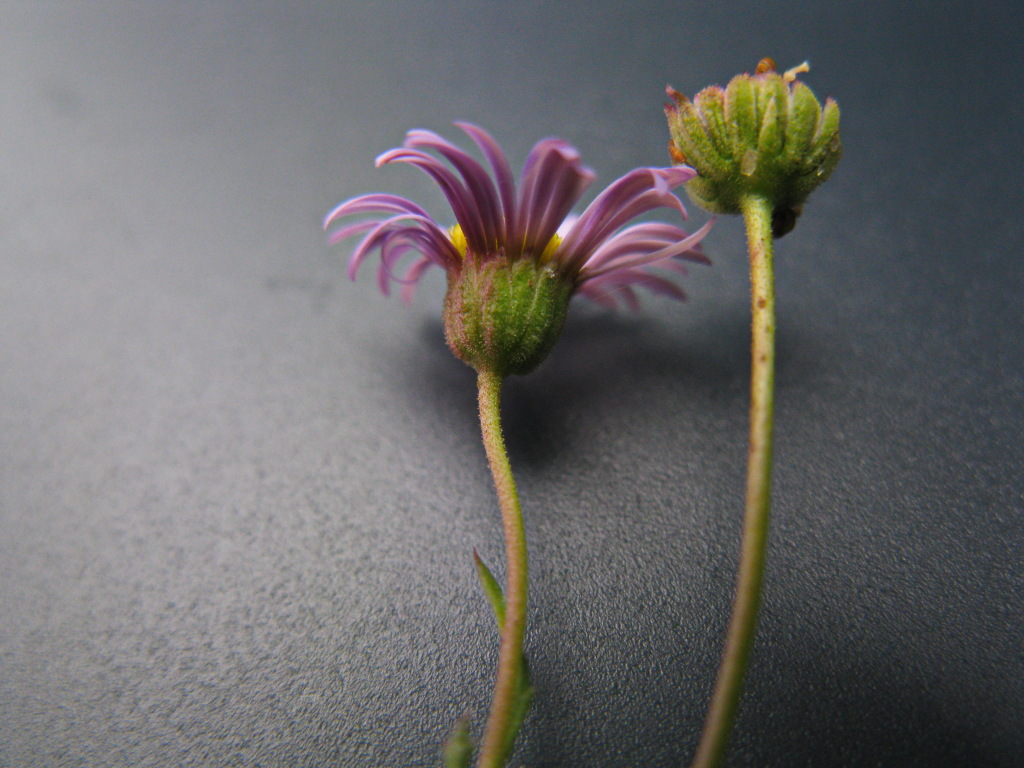Brachyscome ciliaris var. ciliaris
Erect annual or perennial herb; stem and branches glabrous or with moderately dense glandular hairs and occassional pilose hairs, decreasing in density downwards. Leaves to 16 mm long, usually glabrous or sparsely to densely pilose, pinnatisect, occasionally 2-pinnatisect, with 1–6 segments on each side; segments usually obovate to spathulate, rarely linear or oblong, acute. Peduncles with sparse to moderately dense glandular hairs and occasional pilose hairs. Involucral bracts with sparse to dense glandular hairs and occasional pilose hairs. Ligules 5– 7.5 mm long. Cypselas 1.1–1.8 mm long, with glandular hairs on lateral faces, sometimes confined to near apex or glabrous; faces of ray cypselas often tuberculate; marginal wings present or absent on disc florets, ciliate with glandular hairs; pappus a minute ring of teeth c. 0.1 mm high. Flowers mostly Aug.–Dec.
LoM, MuM, Wim, VVP, MSB, RobP, MuF, GGr. Common in north and north-western Victoria and found in an array of communities, e.g. with Halosarcia on sand at the edge of salt lakes, mallee eucalypt communities, Callitris woodland with sandy loam, Casuarina woodland with heavy clay loam, and open-forests of Eucalyptus camaldulensis.
Collections that cannot be assigned to the distinctive var. brachyglossa and var. subintegrifolia are here placed in var. ciliaris and consequently a greater range of variation is accommodated within var. ciliaris than the former varieties. Despite this, var. ciliaris in Victoria may be best left treated as a single taxon given that as currently circumscribed it forms a readily identifiable taxon defined by leaves that are usually highly dissected, with up to six segments present on each side of the leaf, and at least some leaf segments that are obovate or spathulate.
Short (2014) suggests that var. ciliaris may only occur with certainty from Western Australia. The name var. ciliaris is here used to accommodate Victorian populations until a comprehensive revision of Brachyscome ciliaris is conducted and an alternative name is designated to accommodate Victorian populations.
 Spinning
SpinningShort, P.S. (2014). A taxonomic review of Brachyscome Cass. s.lat. (Asteraceae: Astereae).. Journal of the Adelaide Botanic Gardens 28: 1–219.

